Key Takeaways
1. Qubits: The Quantum Building Blocks
The qubit is the basic unit of computation, not the bit.
Beyond Bits. Unlike classical bits, which are either 0 or 1, qubits exist in a superposition of both states simultaneously. This superposition allows quantum computers to explore multiple possibilities at once, offering a potential advantage over classical computers for certain types of problems. Qubits can be represented by physical systems like the spin of an electron or the polarization of a photon.
Measurement Matters. Measuring a qubit forces it to collapse into either the 0 or 1 state, with probabilities determined by its superposition. This act of measurement is fundamental to quantum computation and distinguishes it from classical computation. The measurement process is probabilistic, introducing an element of randomness into quantum algorithms.
Spin and Polarization. The properties of spin and polarization are used to represent qubits. The Stern-Gerlach experiment demonstrated the quantization of spin, showing that particles align their magnetic moments in discrete directions. Similarly, polarized filters can be used to manipulate and measure the polarization of photons, providing a physical realization of qubits.
2. Linear Algebra: The Language of Quantum Computing
Linear algebra forms the foundation of quantum computing.
Vectors and Matrices. Quantum mechanics relies heavily on linear algebra, particularly vectors and matrices, to describe the states of qubits and the operations performed on them. Vectors represent the state of a qubit, while matrices represent quantum gates that transform these states. Understanding vector operations like addition, scalar multiplication, and inner products is crucial for comprehending quantum computations.
Bra-Ket Notation. Dirac's bra-ket notation provides a concise and elegant way to represent vectors and inner products in quantum mechanics. Kets, denoted by |⟩, represent column vectors, while bras, denoted by ⟨|, represent row vectors. The inner product of a bra and a ket, denoted by ⟨bra|ket⟩, yields a scalar value.
Orthonormal Bases. Qubits are represented by unit vectors in a two-dimensional vector space. An orthonormal basis consists of two mutually orthogonal unit vectors that span the space. Different orthonormal bases correspond to different measurement directions. The standard basis, {↑, ↓}, is commonly used, but other bases, such as {→, ←}, are also important.
3. Entanglement: Spooky Action at a Distance
When one of a pair of entangled qubits is measured, it affects the second qubit.
Interconnected Qubits. Entanglement is a quantum phenomenon where two or more qubits become linked together in such a way that they share the same fate, no matter how far apart they are. Measuring the state of one entangled qubit instantaneously influences the state of the other, a concept Einstein famously termed "spooky action at a distance." Entanglement is a key resource for many quantum algorithms and quantum communication protocols.
Tensor Products. The mathematical description of entanglement involves the tensor product, which combines the state vectors of individual qubits to create a joint state vector. Entangled states cannot be expressed as a simple product of individual qubit states, indicating their interconnected nature. The tensor product is the simplest way of combining mathematical models of individual qubits to give one model that describes a collection of qubits.
No Superluminal Communication. Despite the instantaneous correlation between entangled qubits, entanglement cannot be used to transmit information faster than the speed of light. While measuring one entangled qubit reveals information about the other, it does not allow for controlled signaling. This limitation is consistent with the principles of special relativity.
4. Bell's Inequality: Challenging Local Realism
Einstein certainly did not like this interpretation, famously saying that God does not play dice.
Einstein's Concerns. Einstein, along with Podolsky and Rosen (EPR), challenged the completeness of quantum mechanics, arguing that it should be possible to describe physical reality using local realism, which assumes that objects have definite properties independent of measurement and that influences cannot travel faster than light. Einstein's view was that there should be a deeper theory that would explain why the calculations were producing correct answers—a theory that eliminated the randomness and explained the mystery.
Bell's Theorem. John Stewart Bell devised a theorem that provides an experimental test to distinguish between quantum mechanics and local realism. Bell's inequality sets a limit on the correlations that can be observed between measurements on entangled particles if local realism holds true.
Experimental Violation. Experiments have consistently violated Bell's inequality, providing strong evidence against local realism and supporting the predictions of quantum mechanics. These results suggest that the correlations between entangled particles are fundamentally non-local and cannot be explained by classical hidden variables.
5. Quantum Gates and Circuits: The Quantum Computer's Architecture
The qubit is the basic unit of computation, not the bit.
Building Blocks. Quantum gates are the fundamental building blocks of quantum circuits, analogous to logic gates in classical computers. Quantum gates are represented by unitary matrices that act on qubits, transforming their states. Common quantum gates include the Hadamard gate, Pauli gates (X, Y, Z), and the CNOT gate.
Quantum Circuits. Quantum circuits are sequences of quantum gates that operate on qubits to perform computations. The design of quantum circuits is a crucial aspect of quantum algorithm development. Quantum circuits are read from left to right, with qubits flowing through the gates in a specific order.
Universality. A set of quantum gates is considered universal if it can be used to approximate any unitary transformation on qubits. A small set of gates, such as the Hadamard gate, CNOT gate, and single-qubit rotation gates, is known to be universal. Practically all of our quantum circuits will be composed of just these two types of gates.
6. Quantum Algorithms: Exploiting Quantum Weirdness for Speedup
Quantum algorithms exploit the underlying structure of the problem that is being solved.
Beyond Classical Limits. Quantum algorithms leverage quantum phenomena like superposition and entanglement to solve certain problems more efficiently than classical algorithms. Quantum algorithms are not classical algorithms that have been sped up. Instead, they involve quantum ideas to see the problem in a new light.
Query Complexity. Query complexity is a measure of the number of times an algorithm needs to access the input data to solve a problem. Quantum algorithms can sometimes achieve a significant reduction in query complexity compared to classical algorithms. This is one way to demonstrate the potential speedup offered by quantum computation.
Deutsch-Jozsa and Simon's Algorithms. The Deutsch-Jozsa algorithm demonstrates a quantum speedup for a specific problem of determining whether a function is constant or balanced. Simon's algorithm provides an exponential speedup over classical algorithms for finding the period of a function with a hidden periodicity.
7. Shor's Algorithm: A Threat to Modern Cryptography
Shor’s algorithm gives a way of factoring a large number into the product of its prime factors.
Factoring and Cryptography. Shor's algorithm is a quantum algorithm that can factor large numbers exponentially faster than the best-known classical algorithms. This poses a significant threat to RSA cryptography, which relies on the difficulty of factoring large numbers to ensure secure communication. Our Internet security depends on this problem being hard to solve.
Quantum Fourier Transform. The quantum Fourier transform (QFT) is a key component of Shor's algorithm. It efficiently finds the period of a function, which is then used to factor the large number. The QFT is a quantum analogue of the classical discrete Fourier transform.
Post-Quantum Cryptography. The development of Shor's algorithm has spurred research into post-quantum cryptography, which aims to develop encryption methods that are resistant to attacks from both classical and quantum computers. It might be some time until we have quantum computers powerful enough to factor the large numbers that are currently in use, but the threat is real, and it is already forcing us to think about how to redesign the ways that computers can securely talk to one another.
8. Grover's Algorithm: Quantum Search
Grover’s algorithm is for special types of data searches.
Unstructured Search. Grover's algorithm is a quantum algorithm for searching an unsorted database of N items in O(√N) steps, providing a quadratic speedup over the best possible classical algorithm, which requires O(N) steps. Grover's algorithm is important, not only for the problems they can solve but also for the new ideas they introduce.
Amplitude Amplification. Grover's algorithm works by iteratively amplifying the probability amplitude of the target item while suppressing the amplitudes of the other items. This process is repeated until the probability of measuring the target item is close to 1.
Applications. Grover's algorithm can be applied to a wide range of search problems, including finding specific data entries in a database, solving constraint satisfaction problems, and accelerating machine learning algorithms. These underlying ideas have been and are being incorporated into a new generation of algorithms.
9. The Impact of Quantum Computing: A Paradigm Shift
Quantum computation is not a new type of computation but is the discovery of the true nature of computation.
Revolutionizing Computation. Quantum computing has the potential to revolutionize computation by solving problems that are intractable for classical computers. This paradigm shift could have profound implications for various fields, including medicine, materials science, finance, and artificial intelligence.
Hardware Development. The development of quantum computing hardware is a rapidly advancing field, with various platforms being explored, including superconducting circuits, trapped ions, and topological qubits. The first machines are being offered for sale. There is even one machine available on the cloud that everyone can use for free.
Quantum Supremacy. Quantum supremacy refers to the point at which a quantum computer can perform a specific task that is beyond the capabilities of the most powerful classical computers. It looks likely that we will soon enter the age of quantum supremacy. The qubit is the basic unit of computation, not the bit. Computation, in its essence, really means quantum computation.
Last updated:
FAQ
What is "Quantum Computing for Everyone" by Chris Bernhardt about?
- Accessible introduction to quantum computing: The book aims to make quantum computing understandable to anyone comfortable with high school mathematics, focusing on clarity rather than vague analogies.
- Covers core quantum concepts: It explains foundational ideas such as qubits, superposition, measurement, entanglement, and quantum algorithms.
- Mathematics is essential: Bernhardt emphasizes that a real understanding requires some mathematics, but he simplifies it to the essentials and provides step-by-step examples.
- Focus on theory, not hardware: The book is about the theory and software of quantum computation, not about building quantum computers.
Why should I read "Quantum Computing for Everyone" by Chris Bernhardt?
- Demystifies quantum computing: The book breaks down complex quantum concepts into digestible explanations, making the subject approachable for non-experts.
- Bridges physics and computer science: It shows how quantum mechanics and computer science combine to create a new paradigm of computation.
- Prepares for the quantum future: As quantum computing becomes more relevant, understanding its basics is increasingly valuable for students, professionals, and curious readers.
- Engaging and example-driven: Bernhardt uses clear examples, analogies (like the quantum clock), and practical experiments (like polarized filters) to illustrate abstract ideas.
What are the key takeaways from "Quantum Computing for Everyone"?
- Qubits are fundamental: Unlike classical bits, qubits can exist in superpositions and be entangled, leading to new computational possibilities.
- Measurement changes everything: Measuring a qubit affects its state, introducing true randomness and fundamentally differing from classical measurement.
- Entanglement is non-classical: Entangled qubits exhibit correlations that cannot be explained by classical physics, as demonstrated by Bell’s inequality.
- Quantum algorithms can outperform classical ones: Algorithms like Shor’s and Grover’s show that quantum computers can solve certain problems much faster than classical computers.
- Quantum computing is the true nature of computation: Bernhardt argues that quantum computation is more fundamental than classical computation, as anything computable classically can be computed quantumly.
How does Chris Bernhardt define and explain a qubit in "Quantum Computing for Everyone"?
- Qubit as a unit vector: A qubit is any unit vector in a two-dimensional real (or complex) vector space, representing a superposition of two basis states.
- Physical representations: Qubits can be physically realized by the spin of an electron or the polarization of a photon.
- Superposition and measurement: A qubit can be in a superposition of 0 and 1, but measurement collapses it to one of these states with certain probabilities.
- Infinite possibilities: Unlike a classical bit, which is either 0 or 1, a qubit can be in infinitely many states before measurement.
What is superposition, and why is it important in "Quantum Computing for Everyone"?
- Definition of superposition: Superposition means a qubit can exist in a combination of both 0 and 1 states simultaneously, described mathematically as a linear combination.
- Enables quantum parallelism: Superposition allows quantum computers to process multiple possibilities at once, forming the basis for quantum speedup.
- Measurement collapses superposition: When measured, a qubit in superposition yields a definite outcome (0 or 1), with probabilities determined by its amplitudes.
- Key to quantum algorithms: Many quantum algorithms exploit superposition to explore many computational paths in parallel.
How does "Quantum Computing for Everyone" explain entanglement and its significance?
- Entanglement defined: Entanglement occurs when the state of two or more qubits cannot be described independently; their states are linked even when separated.
- Tensor product formalism: The book introduces the tensor product to mathematically describe entangled states.
- Non-classical correlations: Entangled qubits exhibit correlations that defy classical explanation, as shown in Bell’s inequality experiments.
- Foundation for quantum protocols: Entanglement is essential for quantum cryptography, teleportation, and other quantum information tasks.
What is the role of measurement and randomness in quantum computing, according to Chris Bernhardt?
- Measurement affects state: Measuring a qubit changes its state, collapsing it to one of the basis states and potentially altering the system.
- True quantum randomness: Unlike classical randomness (which is due to ignorance of initial conditions), quantum randomness is fundamental and irreducible.
- No hidden variables: Experiments (like those testing Bell’s inequality) confirm that quantum randomness cannot be explained by hidden variables.
- Measurement is central to computation: The outcome of a quantum computation is obtained by measuring qubits, translating quantum results into classical bits.
How does "Quantum Computing for Everyone" introduce and use linear algebra?
- Essential mathematical framework: Linear algebra, especially vectors and matrices, is the mathematical language of quantum mechanics and quantum computing.
- Dirac notation: The book uses Dirac’s bra-ket notation to represent quantum states and operations.
- Operations on qubits: Concepts like vector length, orthogonality, and matrix multiplication are used to describe qubit states, gates, and measurements.
- Accessible explanations: Bernhardt provides step-by-step examples and a “toolbox” for readers to perform calculations relevant to quantum computing.
What are quantum gates and circuits, and how are they described in "Quantum Computing for Everyone"?
- Quantum gates as orthogonal matrices: Quantum gates are operations represented by orthogonal (or unitary) matrices that act on qubits.
- Basic gates: The book covers gates like the Hadamard, Pauli (X, Y, Z), and CNOT, explaining their action on single or multiple qubits.
- Quantum circuits: Circuits are sequences of gates applied to qubits, analogous to classical logic circuits but exploiting superposition and entanglement.
- No-cloning theorem: The book explains why quantum information cannot be copied (cloned), a key difference from classical circuits.
What are the most important quantum algorithms discussed in "Quantum Computing for Everyone"?
- Deutsch and Deutsch-Jozsa algorithms: Early examples showing quantum speedup for specific problems using superposition and interference.
- Simon’s algorithm: Demonstrates exponential speedup over classical algorithms for a problem involving hidden periodicity.
- Shor’s algorithm: Provides a polynomial-time quantum method for factoring large numbers, threatening classical cryptography.
- Grover’s algorithm: Offers a quadratic speedup for unstructured search problems, relevant for database searching.
How does "Quantum Computing for Everyone" address the impact of quantum computing on cryptography and society?
- Threat to current encryption: Shor’s algorithm can break widely used cryptographic schemes like RSA, prompting the need for post-quantum cryptography.
- Quantum key distribution: Protocols like BB84 and Ekert’s use quantum principles to enable secure communication, with practical implementations already underway.
- Quantum supremacy: The book discusses the threshold where quantum computers outperform classical ones, and the implications for computation and security.
- Broader societal impact: Quantum computing is expected to revolutionize fields like chemistry, optimization, and secure communications.
What are the best quotes from "Quantum Computing for Everyone" by Chris Bernhardt, and what do they mean?
- “Computation, in its essence, really means quantum computation.”
- Bernhardt emphasizes that quantum computation is not just a new type of computing, but the most fundamental form, encompassing all classical computation.
- “The randomness is true randomness.”
- This highlights the fundamental difference between quantum and classical randomness, with quantum randomness being irreducible and experimentally verified.
- “Quantum computing is a beautiful fusion of quantum physics with computer science.”
- The book celebrates the interdisciplinary nature of quantum computing, merging deep ideas from both fields.
- “We are entering a new era, with a new way of thinking about what computation really is.”
- Bernhardt points to the paradigm shift quantum computing represents, suggesting it will change our understanding of computation itself.
Review Summary
Quantum Computing for Everyone receives mixed reviews. Many praise its accessibility and clarity in explaining complex concepts, but note it's not truly "for everyone" due to mathematical prerequisites. Readers appreciate the thorough coverage of fundamental quantum computing principles and algorithms. Some find later chapters challenging, even with technical backgrounds. The book is commended for its innovative approach to simplifying quantum computing math while maintaining accuracy. Overall, it's considered a valuable introduction for those with some mathematical aptitude, despite the potentially misleading title.
Similar Books
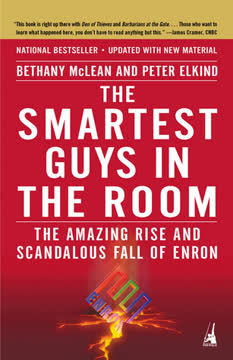


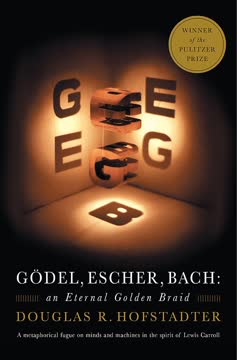
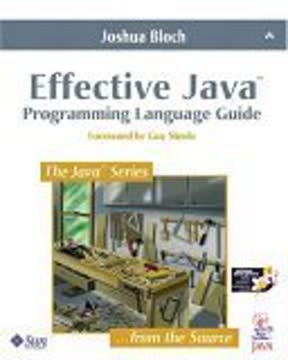

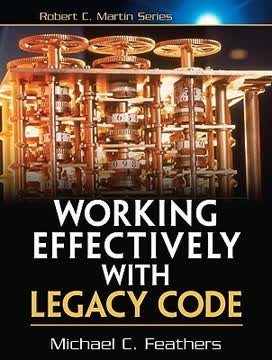
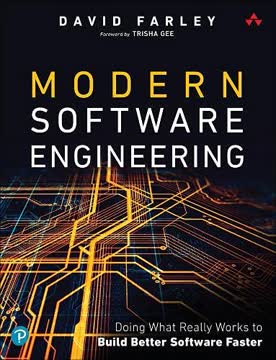
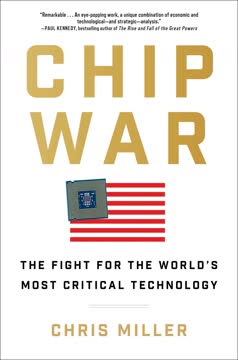
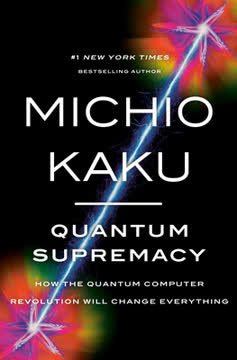
Download PDF
Download EPUB
.epub digital book format is ideal for reading ebooks on phones, tablets, and e-readers.




